Blog Short #221 – 5 Life-Changing Books to Help You Master Stress

Photo by Matias North on Unsplash
This year is off to a challenging start. Regardless of where you are in life, the world is undergoing many changes.
We’ve got AI altering how we work, political ups and downs, and economic uncertainty as inflation remains steady and prices seem to keep rising.
All of those things spell stress – more or less depending on your circumstances.
I’ve got five new books for you that will help you reduce and manage your stress.
All these books focus primarily on dealing with stress when you don’t have the option to change external circumstances.
Even when you can’t change what’s happening around you, you can control what happens inside you. That’s what we’ll target with this reading list.
Here we go.
1. The 5 Resets by Dr. Aditi Nerurkar
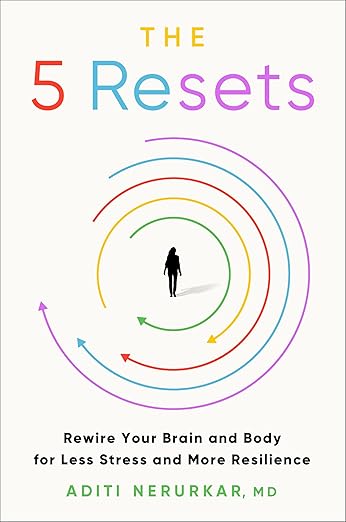 Dr. Nerurkar is a Harvard-trained stress expert who decided to pursue the study of stress and resilience when she experienced anxiety and involuntary heart palpitations that kept her up at night. She was a med student at the time and overworked, as most medical students are, and couldn’t think her way out of it.
Dr. Nerurkar is a Harvard-trained stress expert who decided to pursue the study of stress and resilience when she experienced anxiety and involuntary heart palpitations that kept her up at night. She was a med student at the time and overworked, as most medical students are, and couldn’t think her way out of it.
She recognized that she was operating under the “resilience myth,” which is “the idea that putting your head down and powering through rough times is what resilience is all about.”
Not true. At some point, your body screams at you, and your brain stops working.
So, she began intensive research while working with highly stressed patients, which led to the creation of the “5 Resets.”
These resets are more than just stress-management strategies.
Based on scientific research, they involve rewiring your brain and body to react differently to stressful situations through small incremental changes over time.
The five resets are:
- Get clear on what matters most.
- Find quiet in a noisy world.
- Sync your brain and your body.
- Come up for air.
- Bring your best self forward.
She explains each of these in detail and illustrates with stories about real people who overcame acute and chronic stress.
What I loved about this book, which is different from many books about stress management, is the research she uses to help you understand why the strategies she offers work.
These strategies directly impact brain changes, so they’re more impactful.
The second thing I loved is the “Rule of 2,” which means you start with two small changes that don’t require a lot of energy but create results that motivate you to keep going. It’s an ingenious approach that works.
The best part is that you can follow this process on your own by reading the book and doing the exercises. I’ve used some of the strategies myself and love them!
2. Mind Your Mindset by Michael Hyatt & Megan Hyatt Miller
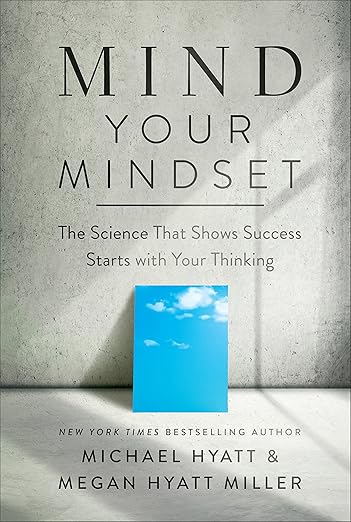 The premise of this book is that we all live with a narrator in our heads.
The premise of this book is that we all live with a narrator in our heads.
Our narrator seeks to find meaning by explaining how things work using cause-and-effect and how they fit into our scheme of reality based on our experiences.
In short, we tell ourselves stories about how things are, but not always based on facts.
The book has three parts. How to:
- Identify (recognize) your narrator with a full explanation of how it works neurologically and psychologically.
- Interrogate (challenge) your narrator to uncover biases, distortions, and assumptions.
- Train your narrator to use its ability to imagine and create while also being mindful of the facts.
Mind Your Mindset was written by a father and daughter team. They run a multi-million dollar company that teaches leadership skills and provides performance coaching to help people achieve their work and life goals.
I found the concept of the “narrator” extremely useful in challenging assumptions and distortions.
Understanding how the brain facilitates this process also helps you manage it. I highly recommend this book!
3. The Let Them Theory by Mel Robbins
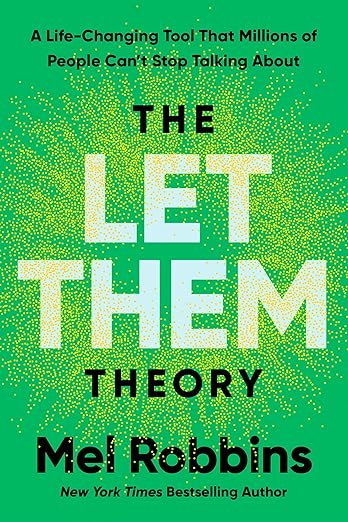 One of the opening statements in the first chapter of this book is:
One of the opening statements in the first chapter of this book is:
“The problem isn’t you. The problem is the power you unknowingly give to other people. You work harder, bend further, and shrink yourself smaller, and still, someone is disappointed. No matter how hard you try, it’s never enough.”
The Let Them Theory is about learning to control what you can, which is you—your reactions, responses, behavior, and actions. Not someone else’s.
The book’s first half describes how to “Let Them” be who they are, think what they think, feel what they feel, and do what they do.
The author delves into what this means and how it works. She outlines the benefits of giving up control of how others perceive you. It’s an exercise in radical acceptance.
The book’s second half deals with “Let Me,” where she discusses how you can respond. It’s where your control lies.
She offers numerous strategies for responding thoughtfully and effectively to provocative people and situations. She also delves into how to deal with other people’s expectations and criticisms.
There’s an invaluable chapter on enabling and rescuing and another on the pros and cons of comparing yourself to others.
There is also a special appendix section for parents to apply the Let Them Theory to children.
The book is full of personal stories that illustrate the content. The author’s compassion comes through in each one, and her track record of overcoming adversity is admirable.
4. Crucial Conversations by Joseph Grenny, Kerry Patterson, Ron McMillan, Al Switzler & Emily Gregory
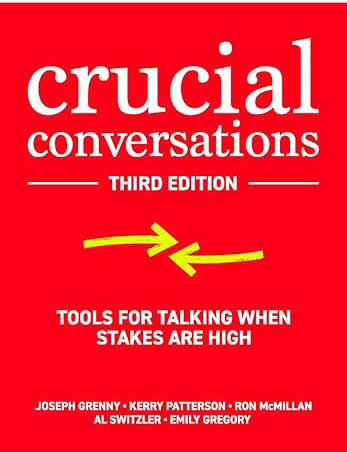 Crucial Conversations is a detailed, actionable manual for how to navigate critical conversations successfully. The authors define a “crucial conversation” as a discussion between two or more people where there are: (1) opposing opinions, (2) high stakes, and (3) strong emotions.
Crucial Conversations is a detailed, actionable manual for how to navigate critical conversations successfully. The authors define a “crucial conversation” as a discussion between two or more people where there are: (1) opposing opinions, (2) high stakes, and (3) strong emotions.
The beauty of this book is that the authors identify the obstacles that arise in these conversations and offer comprehensive strategies to remove them so that everyone walks away feeling heard and satisfied with the exchange.
The book is divided into three main parts after the introduction.
Part 1 deals with what to do before starting a crucial conversation.
This upfront prep will go a long way toward ensuring you’re clear on the topic and how you want to convey it. It will also set the scene for a better outcome.
Part 2 focuses on the conversation itself – yours and theirs.
In this section, the authors do a good job of describing how these conversations go awry. They offer concrete steps to make it safe for everyone to talk, be heard, and explore each other’s points of view without defensiveness, overreaction, personal attacks, or withdrawal.
Part 3 addresses how to finish.
These chapters describe how to move from discussion to action – solutions, next steps, and assignments.
I suggest reading The Let Them Theory first, followed by Crucial Conversations.
5. The Comfort Book by Matt Haig
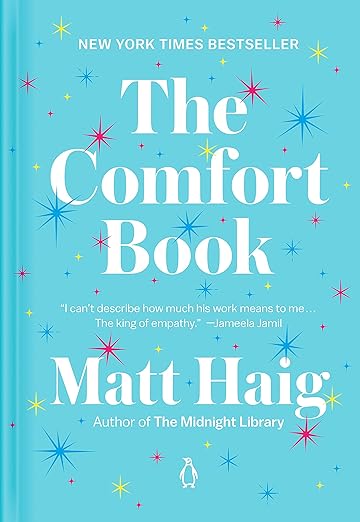 The Comfort Book is one of my all-time favorite books. It’s not a book to sit down and read cover to cover, although you could. It’s meant to be read slowly – one entry at a time.
The Comfort Book is one of my all-time favorite books. It’s not a book to sit down and read cover to cover, although you could. It’s meant to be read slowly – one entry at a time.
The book contains short essays, poems, advice, stories, and metaphors. It’s divided into three loosely structured parts with numerous entries under each.
The author uses his own experiences with anxiety, depression, and psychological growth to narrate his journey.
You’ll find yourself resonating with many of the themes as they’re universal.
The entries vary. Sometimes, they’re philosophical, sometimes whimsical, and always comforting and insightful.
I’ll leave you today with an excerpt from this book. It’s one of my favorites:
You don’t have to be positive. You don’t have to feel guilty about fear or sadness or anger. You don’t stop the rain by telling it to stop. Sometimes you just have to let it pour, let it soak you to your skin. It never rains forever. And know that, however wet you get, you are not the rain. You are not the bad feelings in your head. You are the person experiencing the storm. The storm may knock you off your feet. But you will stand again. Hold on.”
That’s all for today.
Have a good week!
All my best,
Barbara